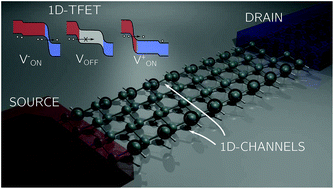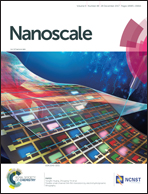First principles investigation of tunnel FETs based on nanoribbons from topological two-dimensional materials†
Abstract
We explore nanoribbons from topological two-dimensional stanene as a channel material in tunnel field effect transistors. This novel technological option offers the possibility of building pure one-dimensional (1D) channel devices (comprised of a 1D chain of atoms) due to localized states placed at the nanoribbon edges. The investigation is based on first-principles calculations and multi-scale transport simulations to assess the performance of devices against industry requirements and their robustness with respect to technological issues like line edge roughness, detrimental for nanoribbons. We will show that edge states are robust with respect to the presence of non-idealities (e.g., atom vacancies at the edges), and that 1D-channel TFETs exhibit interesting potential for digital applications and room for optimization in order to improve the ION/IOFF at the levels required by the ITRS, while opening a path for the exploration of new device concepts at the ultimate scaling limits.



 Please wait while we load your content...
Please wait while we load your content...